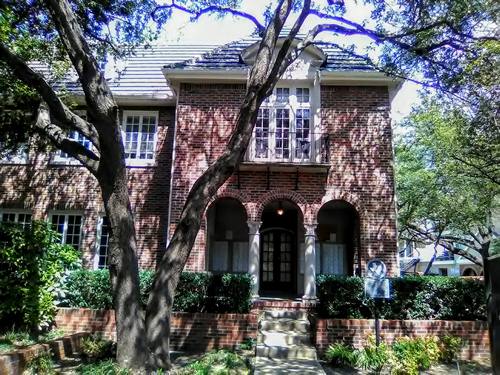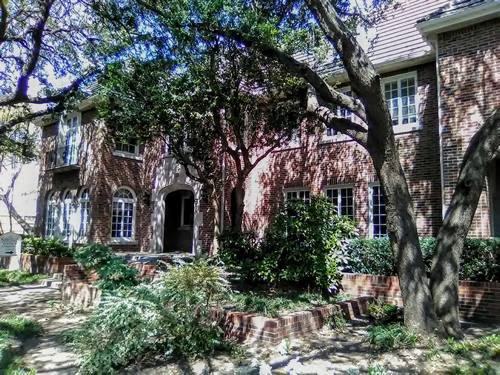Cedar Springs, Texas, annexed by Dallas. (original) (raw)

In a change for the better, I moved from Downtown Garland to the outer edges of Uptown Dallas in March 2018. Doing so meant that I would have to take the bus to work instead of the train. On one of these many journeys, I noticed a park on Lemmon Avenue situated next to the Dallas North Tollway across from the Whole Foods Market. I decided I would one day visit it if I ever had the chance. That opportunity arrived on a cold January day when I decided it would be faster to walk to the store than wait for the next bus. On my way, I passed Braddock Park at 4600 Lemmon Avenue but paid a visit on the return trip. The park, established in 1922, was considerably large and barren. According to the 1936 historical marker, constructed as part of the Texas Centennial statewide celebration, credits the park as being the earliest historic site in Dallas County because it was the location of a forgotten town called Cedar Springs.

Cedar Springs Centennial Marker
Photo courtesy Clint Skinner, March 2019

Cedar Springs Centennial Marker in Craddock Park
Photo courtesy Clint Skinner, March 2019
The granite marker read: Visited in 1840 by Colonel Wm. G. Cooke's preliminary exploration for a route between Austin and Red River. A community also called Cedar Springs, established in this vicinity in 1843 by Dr. John Cole, rivalled Dallas in an election in 1848 for county seat. In 1929, the land was annexed to Dallas.

Cedar Spring Historical Marker by the apartment complex
Photo courtesy Clint Skinner, March 2019
Curious to know more about Cedar Springs, I headed to my best friend's apartment complex at the intersection of Kings Road and Cedar Springs Road. Located only a few blocks from my own place, it had two historical markers which I had never gotten around to reading for one reason or another. I decided on the spot to check them out and see if they had anything to do with the town's history. After entering the complex, I walked through the familiar park and read the 1984 historical marker.

Cedar Springs Historical Marker
Photo courtesy Clint Skinner, March 2019
The sign stated: Although settlement of the town of Cedar Springs did not begin until after 1843, the area had been surveyed during the late 1830s by Colonel G. W. Cooke in preparation for construction of a military road from Austin to the Red River. In 1843, Dr. John Cole and his wife, Mary, along with their eight children, arrived in this area. Cole received a Peters colony land grant about two miles east of the Cedar Springs branch of the Trinity River. Preferring to settle closer to the springs, he purchased additional acreage in this area, built a home, and opened a general store.
The name of the community possibly was taken from the abundance of cedar trees near the springs. Cedar Springs gradually attracted additional settlers, and several other businesses, including a distillery, steam-powered flour mill, and grist mill, were begun.
Development of the Cedar Springs community declined following Dallas' selection as the Dallas County seat in 1850. Toward the end of the nineteenth century, the area began to experience suburban growth and was renamed Oak Lawn. The site of the early town of Cedar Springs was annexed by the City of Dallas in a series of municipal actions between 1920 and 1940.

The Reichenstein Home with historical marker
Photo courtesy Clint Skinner, March 2019
Although my intention was to read both markers, I only read the one located in the park. A few weeks ago, I finally got around to reading the third marker. It refered to the building currently serving as the leasing office and mail center. Beforehand, it was called the Reichenstein Home.
The marker said: Dallas native Jacob Reichenstein (1881 - 1950) became a leader in the city's retail lumber trade. Beginning as a clerk with Cowser and Company in 1902, he was made a partner and general manager in 1915 and president of the company three years later. This home, built for his family in 1931, was designed by Dallas architects Marion Fooshee and James Cheek. The Reichenstein home features decorative brickwork, Palladian transoms, and a steeply-pitched hip roof.

Thus ends this tale of three markers and a forgotten town called Cedar Springs. © Clint Skinner
Texas Escapes, in its purpose to preserve historic, endangered and vanishing Texas, asks that anyone wishing to share their local history, stories, landmarks and vintage/historic photos, please contact us.